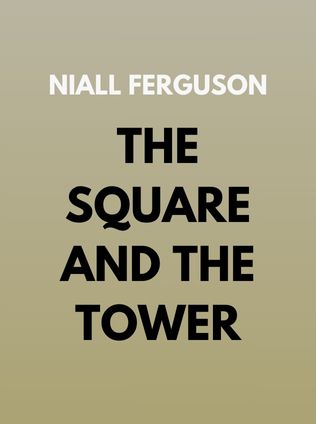
The Square and the Tower
Networks and Power, from the Freemasons to Facebook
By Niall Ferguson
Published 10/2017
About the Author
Niall Ferguson is a distinguished historian, academic, and author, widely recognized for his innovative approach to the study of history. Born in Glasgow, Scotland, Ferguson has spent much of his career exploring the intersection of economics, politics, and society. He earned his degree from Magdalen College, Oxford, where he first began to hone his unique perspective on historical events. Ferguson has held prestigious positions at several leading academic institutions, including Harvard University, Stanford University, and the London School of Economics.
Ferguson’s work is characterized by his ability to weave complex narratives that connect the past with the present, offering insights that are both provocative and enlightening. His previous works, such as "The Ascent of Money" and "Civilization: The West and the Rest," have garnered critical acclaim and cemented his reputation as one of the foremost historians of his generation. In "The Square and the Tower," Ferguson continues this tradition, applying network theory to the study of world history in a way that challenges traditional historical narratives and offers new perspectives on the forces that have shaped our world.
Main Idea
"The Square and the Tower" explores the dynamic interplay between hierarchical structures (represented by the tower) and networks (represented by the square) throughout history. Ferguson argues that while traditional historical analysis has often focused on formal hierarchies such as governments and corporations, networks—whether social, commercial, or informal—have played an equally, if not more, significant role in shaping historical events and trends.
The central thesis of the book is that networks have often been the hidden forces behind major historical shifts, challenging and sometimes toppling established hierarchies. Ferguson delves into the history of these networks, tracing their impact from the Middle Ages through the Enlightenment, and into the modern digital age. He also explores how the rise of global networks, particularly those enabled by the internet and social media, are reshaping the balance of power in the contemporary world.
Table of Contents
- Introduction: The Square and the Tower
- The Networked World
- The Rise and Fall of Hierarchies
- Networks and the Enlightenment
- The Age of Revolution
- The Industrial Revolution and the Birth of Modern Networks
- The Twentieth Century: A Battle Between Networks and Hierarchies
- The Digital Age: Networks Take Center Stage
- The Future of Networks and Hierarchies
- Conclusion: Rethinking History Through the Lens of Networks
Introduction: The Square and the Tower
In the introduction, Ferguson sets the stage for his exploration by introducing the metaphor of the square and the tower. The tower represents formal hierarchical structures—governments, corporations, and other institutions that exert centralized control. The square, on the other hand, represents the informal networks that connect people and ideas outside of these formal structures. This duality is a recurring theme throughout the book, as Ferguson illustrates how the tension between these two forces has driven much of human history.
The Networked World
Ferguson begins his journey by examining the concept of networks and how they function in society. He explains that networks are not a new phenomenon; they have existed for as long as humans have formed social bonds. However, their role in shaping history has often been overlooked. According to Ferguson, networks are defined by their decentralized nature, allowing for the free flow of information and ideas. This characteristic makes them inherently powerful but also difficult to control.
Sign up for FREE and get access to 1,400+ books summaries.
You May Also Like
Rich Dad Poor Dad
What the Rich Teach Their Kids About Money - That the Poor and Middle Class Do Not!
By Robert T. KiyosakiFreakonomics
A Rogue Economist Explores the Hidden Side of Everything
By Steven D. Levitt and Stephen J. DubnerI Am Malala
The Story of the Girl Who Stood Up for Education and Was Shot by the Taliban
By Malala YousafzaiFactfulness
Ten Reasons We're Wrong About the World – and Why Things Are Better Than You Think
By Hans Rosling



















